May Walking Tour - Xeric Bulbs
For many people the mention of spring bulbs conjures images of an “estate garden” swathed in bands of color: rivers of blue grape hyacinth, fields of sunlit tulips or woodland slopes awash in early daffodils. What may not come to mind is the humble origins of most of our bulbs, and just how tough they can be.
On the extravagant side, impressive displays can be costly and labor intensive, and don’t always reflect what is practical in our semiarid climate for a home gardener—even an obsessed one! Even so, for the massive display of spring bulbs that your imagination may be expecting, head immediately to the Annuals Garden and Pavilion. Fragrant mosaics of hyacinths, tulips and daffodils are waiting to dazzle you. For those with a penchant for more unique and intimate gardens, read on.
Hundreds of bulb species come to us from the harsh mountains and grasslands of steppe climates where moisture is unpredictable, summers sunny and hot, and winters cold and dry—sound familiar? This helps explain why they exist with true bulbs (or similar structures) in the first place: a bulb acts as a reservoir for moisture and resources to ensure survival, even thru the tough times that inevitably occur in a steppe climate like our own. Thus many wild species of bulbs—tulips, alliums, crocus, scilla, and dozens more—are expertly adapted to thrive in our dry Western gardens even though they may originate in far off Turkey or Iran. They burst with early growth while spring moisture is available, then wither from view as the drier heat of summer sets in.
Here at the Gardens bulbs are used in every conceivable way, and they greet you even before you enter our gates. Bulb season starts early, with the first species of crocus, snowdrops and iris coming and going in the Water-Smart Garden as early as February and March. That’s just the beginning, as April and May are prime for tulips, especially the perennial and water-thrifty little species like Tulipa tarda, T. clusiana, T. linifolia, and the charming T. vvedenskyi with its electric orange-red flowers and rippled soft green leaves. These pair well with the many shades of blue Muscari (grape hyacinth), so tough that they persist for decades around abandoned homesteads on the Plains. Dozens of species are found throughout the gardens, especially in the Steppe Garden, PlantAsia, and the Rock Alpine Garden.
In the Water-Smart Garden, Iris bucharica appears now from true bulbs, its stems stacked with bright green opposite leaves and topped with gold and white flowers. These coincide with the beginning of bearded iris season, growing from thick rhizomes rather than true bulbs. The miniature forms like ‘Banbury Ruffles’ bloom first. Then the Arilbred types begin. These are drought-tolerant complex hybrids of Middle Eastern, Asian and bearded iris. Most are goblet-shaped and exotic looking, with veined and patterned petals, rich colors and dark blotches, and even more tolerant of summer drought than standard bearded iris.
Larger flowering bulbs reach a crescendo from late April into early June. These announce themselves everywhere, from the O’Fallon Perennial Walk and the Water-Smart Garden, to the Steppe Garden, Plant Select Garden and Rock Alpine Garden. Ornamental onions—Allium spp. and cultivars—appear like fireworks everywhere, with violet to purple starbursts from 2 to 12 inches across. (Most will reseed abundantly, so we remove spent stems before seeds drop.) These pair dramatically with the many foxtail lilies—Eremurus species and cultivars—that thrive here, lifting their flowering spires up to seven feet tall. Bees love all of these and buzz everywhere collecting pollen and nectar well into June. By mid-summer the leaves of Allium and Eremurus will wither and the plants will rest in the dry garden soil until next spring.
The full list of drought-tolerant bulbs would be a long one. Different species bloom throughout the spring and summer season, including hardy species of Amaryllis, Corydalis, Oxalis, Triteleia, Asphodelus, Chionodoxa, and even some natives that you may be less familiar with: Dichelostemma, Leucocrinum and Calochortus. All are gems that are well worth seeking out, adding a durable and diverse layer to your dry-loving Colorado garden.
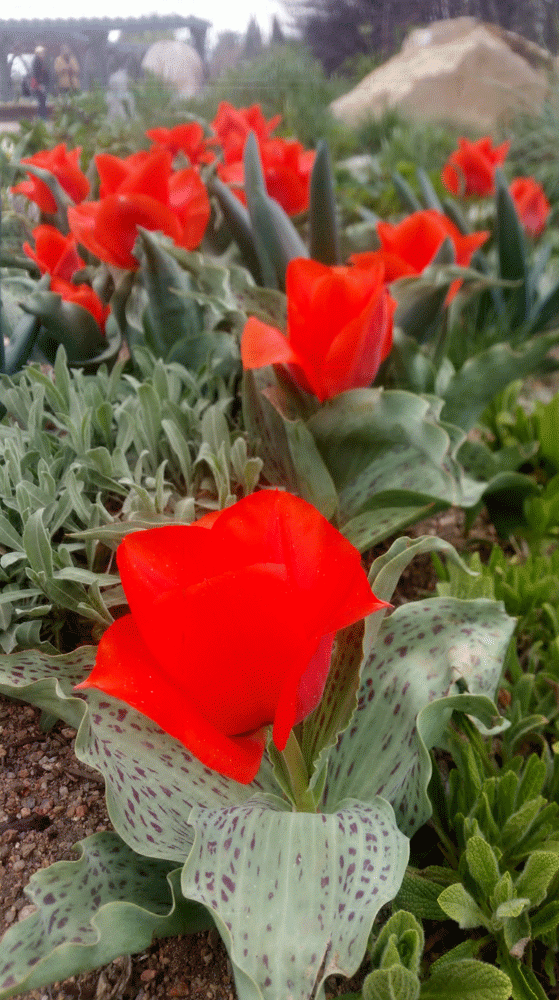
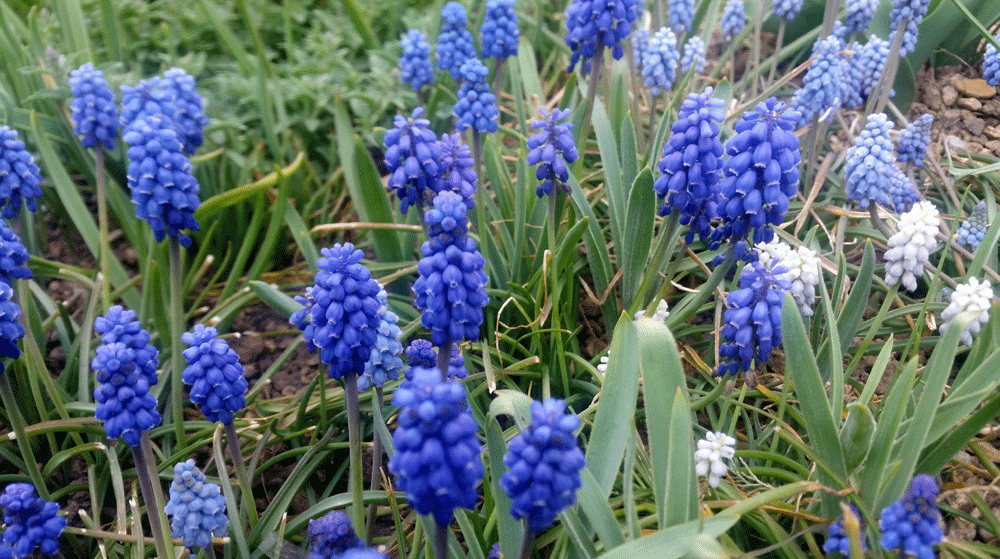
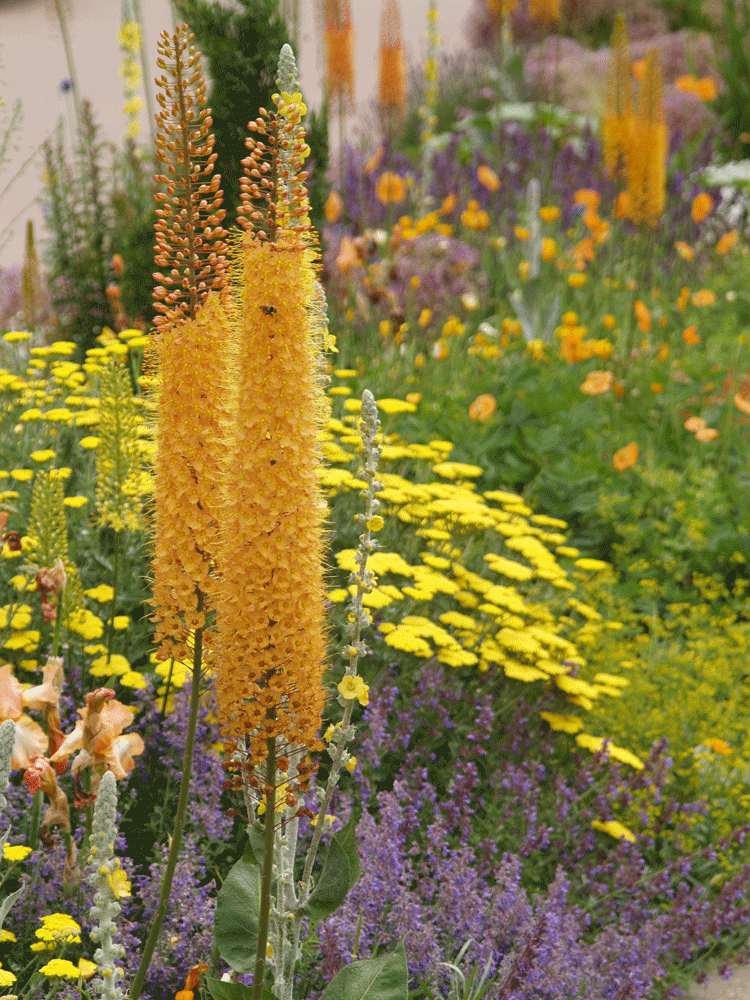
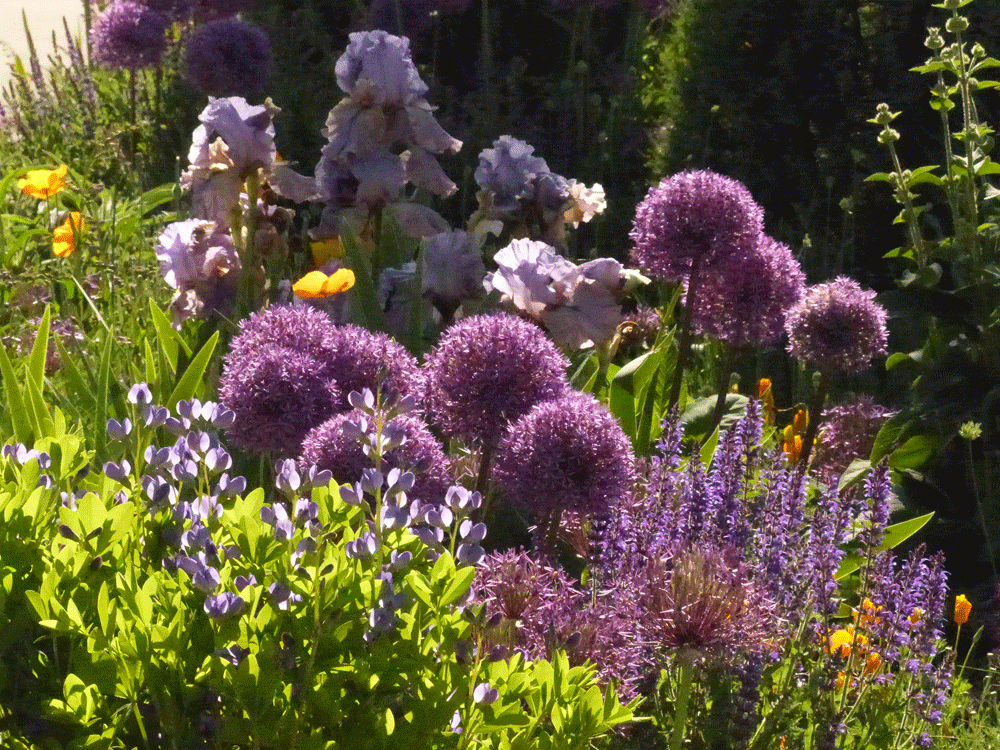
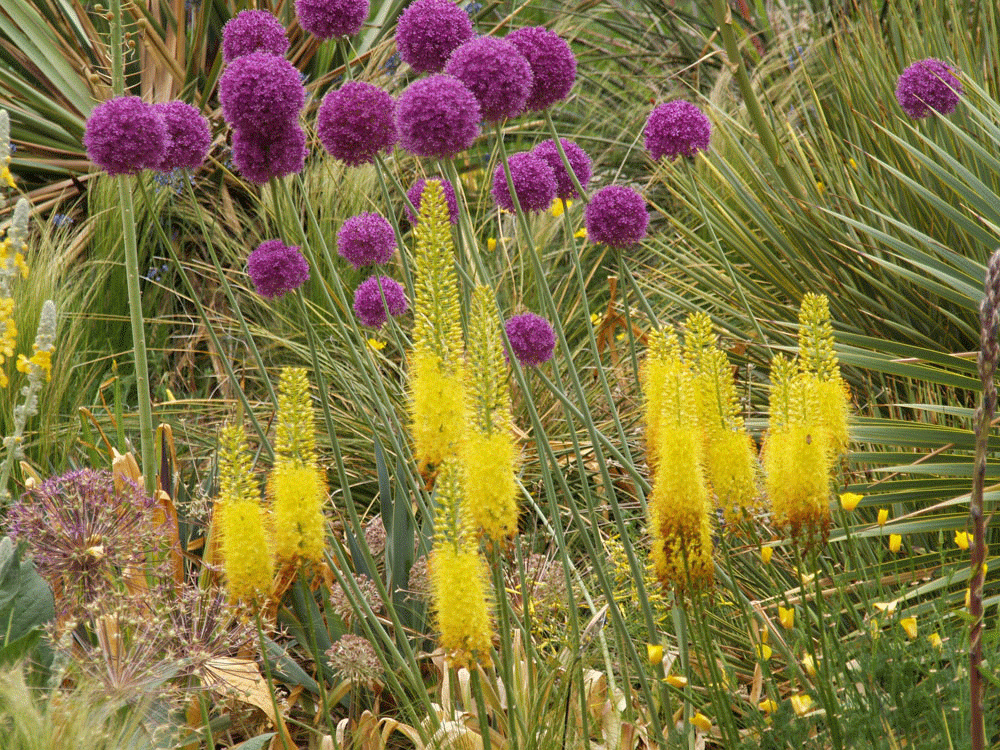
Comments
Garden visit
Are there electric carts available for people with disabilities?
Electric carts
Hi Betty,
We do not offer motorized wheelchairs or scooters. Wheelchairs are available at no charge on a first-come, first-served basis at the Information Desk in the Boettcher Memorial Center.
Enjoy your visit!
Doris Boardman
Website and SEO Manager
Electric Carts
Surely DBG. Can afford a few electric carts for those who need them, or provide volunteers to assist. Please reconsider this response. I am not disabled but I am a caregiver. I have noticed a real lack of concern in Denver government for the needs of disabled and enforcement of ADA.
Add new comment